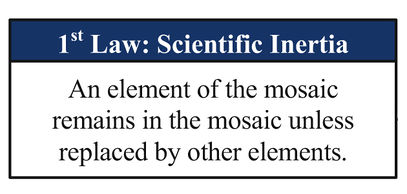Difference between revisions of "The Theory of Scientific Change"
Jump to navigation
Jump to search
Paul Patton (talk | contribs) |
Paul Patton (talk | contribs) |
||
| Line 24: | Line 24: | ||
=== Theorems === | === Theorems === | ||
| + | ====Rejection of Elements==== | ||
| + | ====Contextual Appraisal==== | ||
| + | ====Scientific Underdeterminism==== | ||
| + | ====Mosaic Split and Mosaic Merge==== | ||
| + | ====Static and Dynamic Methods==== | ||
| + | ====Sociocultural Factors==== | ||
| + | ====The role of Methodology==== | ||
== Open Questions == | == Open Questions == | ||
Revision as of 14:59, 1 August 2016
Theory of Scientific Change (TSC) is a descriptive theory that attempts to explain changes in a scientific mosaic, i.e. transitions from one theory to the next and one method to the next. The current theory of scientific change explains many different aspects of the process such as theory acceptance and method employment, scientific inertia and compatibility, splitting and merging of scientific mosaics, scientific underdeterminism, changeability of scientific methods, role of sociocultural factors, and more.
Contents
Prehistory
Prehistory here
History
Current View
Axioms
Zeroth Law
First Law
Second Law
Third Law
Theorems
Rejection of Elements
Contextual Appraisal
Scientific Underdeterminism
Mosaic Split and Mosaic Merge
Static and Dynamic Methods
Sociocultural Factors
The role of Methodology
Open Questions
• Question 1
• Question 2
Related Articles
Notes
References
- a b c Barseghyan, Hakob. (2015) The Laws of Scientific Change. Springer.
- ^ Sebastien, Zoe. (2016) The Status of Normative Propositions in the Theory of Scientific Change. Scientonomy 1, 1-9. Retrieved from https://www.scientojournal.com/index.php/scientonomy/article/view/26947.
- a b Laudan (1984)
- a b c d e f g Barseghyan(2015)
- ^ Sebastian(2016)
- ^ Kuhn (1977)
